Understanding the Role of Medical Coding in Modern Healthcare

If you have ever wondered why your clinic’s revenue does not match the number of patients you see, the problem might not be your care. It might be your codes.
Medical coding is the silent engine behind every healthcare organization’s revenue cycle. When it is accurate and efficient, your cash flow stays healthy. When it is not, denials increase, and your team spends hours chasing unpaid claims.
This guide explains what medical coding really is, why it matters for your practice, and how a modern approach can turn financial frustration into predictable, consistent revenue.
If you manage a clinic, billing department, or healthcare business, this article is for you.
What We’ll Cover
- What Medical Coding Actually Means
- Why Medical Coding Is So Important for Healthcare Practices
- Common Coding Challenges and How to Fix Them
- The Role of AI in Improving Accuracy and Speed
- How MedVoice Helps Streamline the Entire Coding Workflow
- FAQs
- Final Thoughts
What Medical Coding Actually Means
Medical coding translates a patient’s visit, including diagnoses, treatments, and procedures, into standardized alphanumeric codes that insurance companies recognize for payment.
Every healthcare service must be documented and coded correctly using systems such as ICD-10, CPT, and HCPCS.
- ICD-10 codes describe the diagnosis or condition. For example, J06.9 represents an acute upper respiratory infection.
- CPT codes identify medical procedures or services performed, such as 99213 for an office or outpatient visit.
- HCPCS codes cover items like equipment, medications, and ancillary services not included under CPT.
Without proper coding, insurers cannot process claims accurately. This results in denials, payment delays, and compliance risks.

In simple terms, coding connects care to payment.
Why Medical Coding Is Essential for Healthcare Practices

Your revenue cycle depends on coding accuracy. Revenue cycle management relies on accurate coding, affecting cash flow, compliance, and patient satisfaction. When done right, it keeps everything running smoothly.
The key reasons it matters:
- Accurate Reimbursements
Each service provided has a corresponding code that determines payment. Incorrect or incomplete codes lead to rejections and underpayments. - Regulatory Compliance
Correct coding ensures adherence to payer and government standards such as HIPAA and CMS. This reduces audit risks and potential penalties. - Operational Efficiency
Clean claims are processed faster, saving time and resources that would otherwise go into resubmissions and appeals.
- Data Integrity
Coding accuracy provides reliable data for your reporting systems. This allows you to identify financial trends and forecast revenue more effectively. - Better Patient Experience
Clear and accurate coding prevents billing confusion and unexpected charges, which strengthens trust with patients.
Coding is not just administrative work. It is the foundation of financial health in healthcare.
Common Medical Coding Challenges and How to Fix Them
Even the most efficient practices encounter coding challenges. Let’s go through the most common ones and how to resolve them.
1. Inconsistent Documentation
Physicians document procedures differently. Vague or incomplete notes force coders to make assumptions, which leads to inaccuracies.
Fix: Standardize templates and integrate AI-powered Documentation tools that capture structured, accurate data directly from provider notes.
2. Frequent Code Updates
ICD and CPT codes are updated annually. Missing an update can result in claim rejections.
Fix: Use automated systems that synchronize code libraries with the latest regulatory updates in real time.
3. Claim Denials
Denials often happen because of mismatched codes, missing modifiers, or incomplete details.
Fix: Conduct regular audits and track denial trends to identify recurring issues before they impact cash flow.
4. Lack of Training
Without continuous training, even experienced coders fall behind on new regulations and payer rules.

Fix: Partner with a provider like MedVoice, where coders receive ongoing education to maintain compliance and accuracy.
Addressing these issues can significantly reduce denials and keep your collections steady.
How AI Is Transforming Medical Coding
AI is reshaping medical coding by improving speed, accuracy, and compliance. However, it is not replacing human coders. It is enhancing their efficiency.
At MedVoice, AI-driven systems analyze documentation and suggest accurate codes based on context. Certified coders then review and validate those codes. This creates a hybrid process that combines technology with human expertise.
Here’s what AI brings to the table:
- 98% coding accuracy through intelligent validation and pattern recognition.
- 40% faster turnaround from documentation to claim submission.
- Fewer compliance issues since AI flags missing or conflicting data before claims are submitted.
The result is a faster, cleaner revenue cycle that allows healthcare teams to focus more on patients and less on paperwork.

Experience, Expertise, and Trust

At MedVoice, we have spent more than 20 years helping healthcare organizations of all sizes improve their medical documentation and billing systems.
Our certified coders bring deep industry knowledge and use AI-enhanced workflows to deliver accuracy and compliance. We understand payer variations, specialty-specific nuances, and the fine balance between clinical detail and coding precision.
Here’s what that looks like in numbers:
- 98% coding accuracy
- 40% faster A/R turnaround
- Two decades of HIPAA-compliant operations
This combination of experience and technology gives healthcare providers the confidence that every claim is right the first time.
Ready to Optimize Your Coding Process?
If you are spending more time correcting rejections than serving patients, it is time to reassess your process.
Ready to take the next step?
Explore MedVoice’s Medical Billing & Coding Services and see how AI-assisted accuracy can improve your practice’s financial performance.
Whether you want to outsource coding or enhance your in-house team, MedVoice offers both expertise and advanced technology in one solution.
Frequently Asked Questions About Medical Coding
What’s the difference between medical billing and medical coding?
Medical coding involves translating clinical notes and procedures into standardized codes that insurance companies use to process payments. Medical billing takes those codes and turns them into claims submitted to payers. Coders focus on accuracy, while billers focus on getting those claims paid. Both roles are essential for a smooth revenue cycle.
How does inaccurate coding affect a clinic’s revenue?
Inaccurate coding can cause claim denials, payment delays, and even audits. For example, using the wrong CPT modifier or a mismatched ICD code can lead to automatic rejection. Over time, these errors drain revenue and increase administrative workload. Clean, accurate coding ensures steady cash flow and protects your practice from compliance issues.
Are AI-based coding tools reliable?
Yes, when used with proper oversight. AI tools can scan documentation, flag inconsistencies, and suggest appropriate codes. However, human coders remain essential for understanding context and confirming compliance. At MedVoice, AI systems are built to assist coders, not replace them, ensuring accuracy and accountability in every claim.
How often do coding rules change?
Coding rules change annually, usually in October, when CMS and AMA release updates. Some insurance payers issue policy changes quarterly as well. Staying current is crucial to avoid denials and penalties. MedVoice continuously integrates new code updates into our systems to keep clients compliant and worry-free.
Can outsourcing coding help smaller practices?
Yes. Outsourcing gives smaller practices access to certified coders, advanced AI systems, and continuous compliance updates without the cost of managing an in-house team. This not only saves time but also improves claim accuracy and acceptance rates.
What’s the best way to improve claim acceptance rates?
Start by ensuring your documentation is complete and your coding accurate. Use pre-submission validation tools to catch errors early. Establish a clear feedback loop between providers and coders, so clinical notes always align with payer requirements. Partnering with MedVoice ensures that every step of your process supports higher first-pass approval rates.
Conclusion: Turn Accuracy Into Revenue Confidence
Medical coding is not just an administrative step; it is the foundation of financial stability for every healthcare practice.
When your coding is accurate, claims move faster, denials drop, and revenue becomes more predictable. That means less stress, better performance, and more time to focus on patients.
If you want to strengthen your revenue cycle, start with your coding.
Learn More About MedVoice’s Medical Billing & Coding Solutions and see how accuracy drives better results for your practice.






